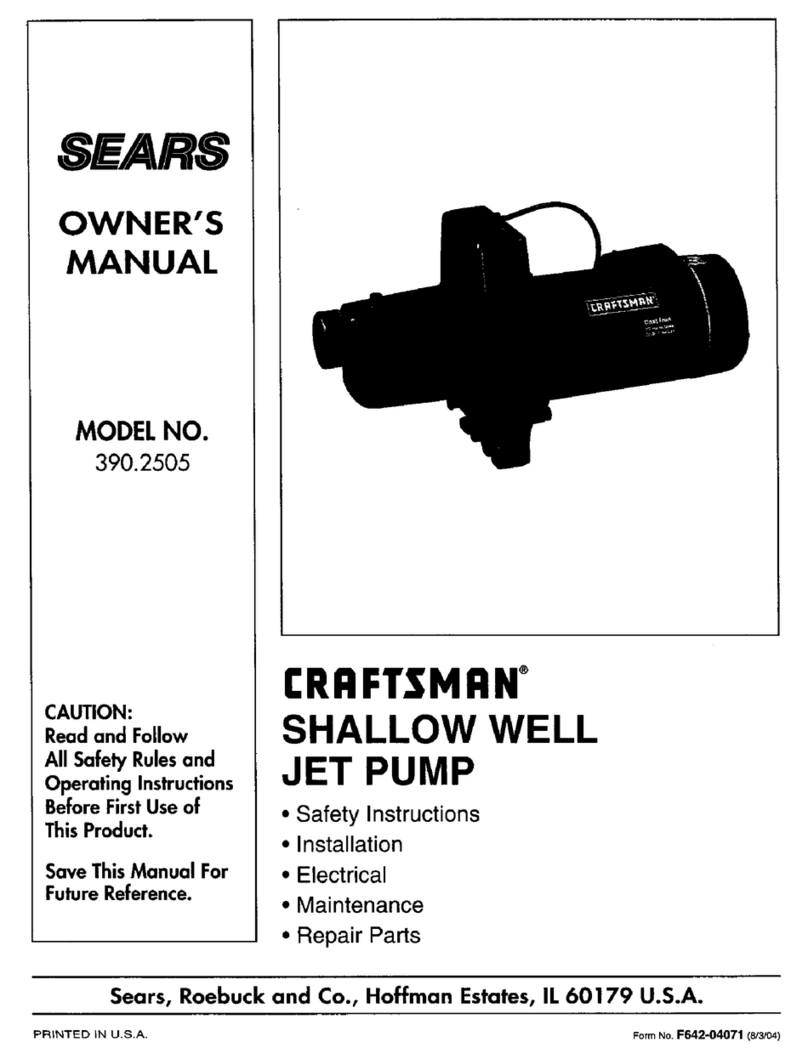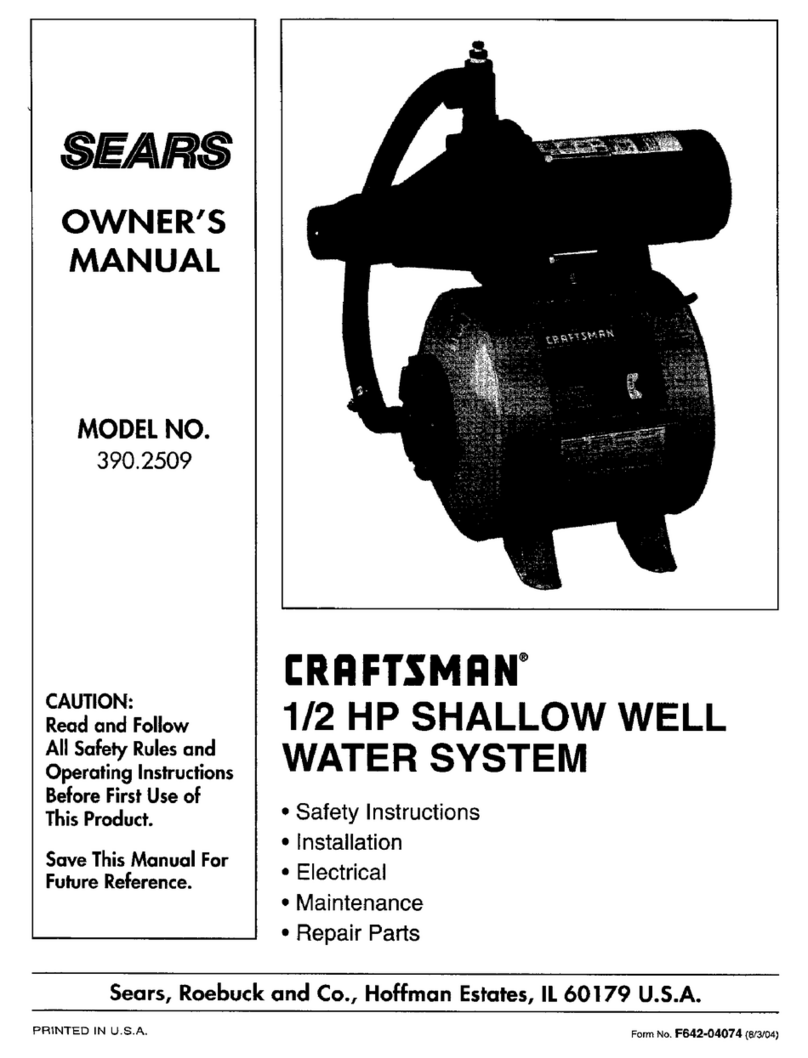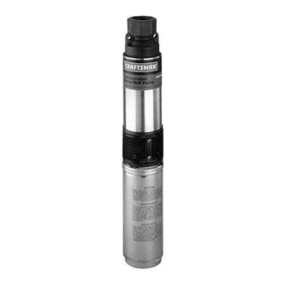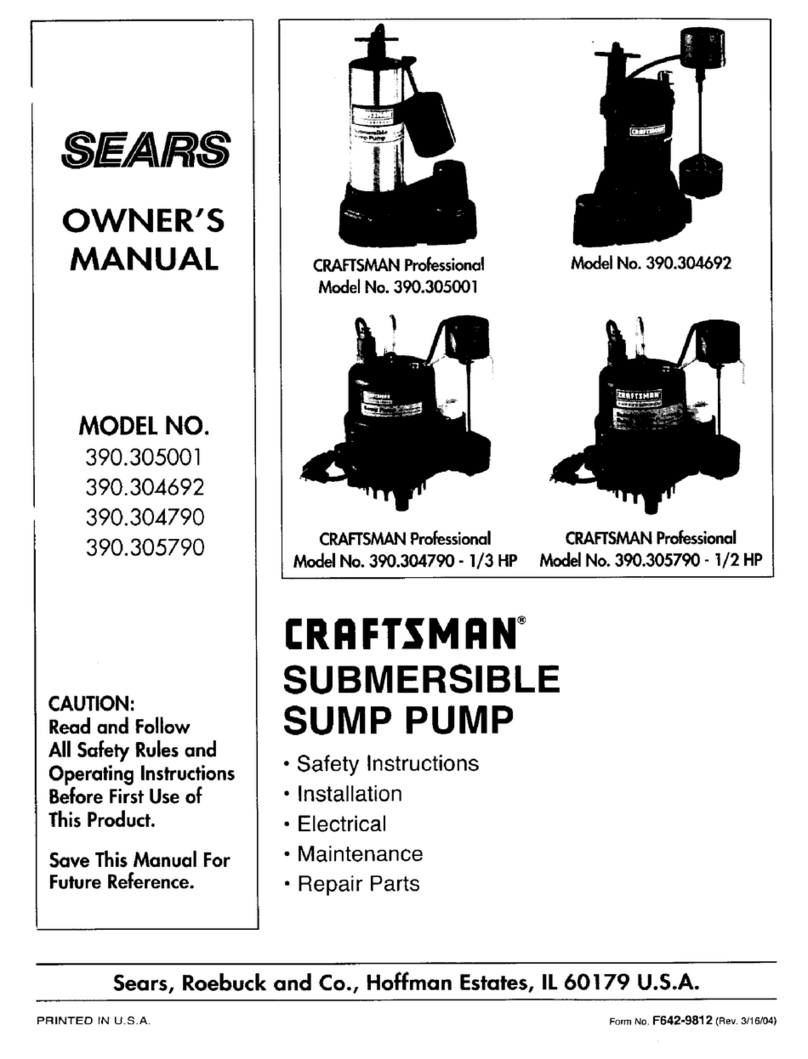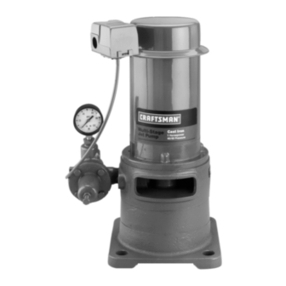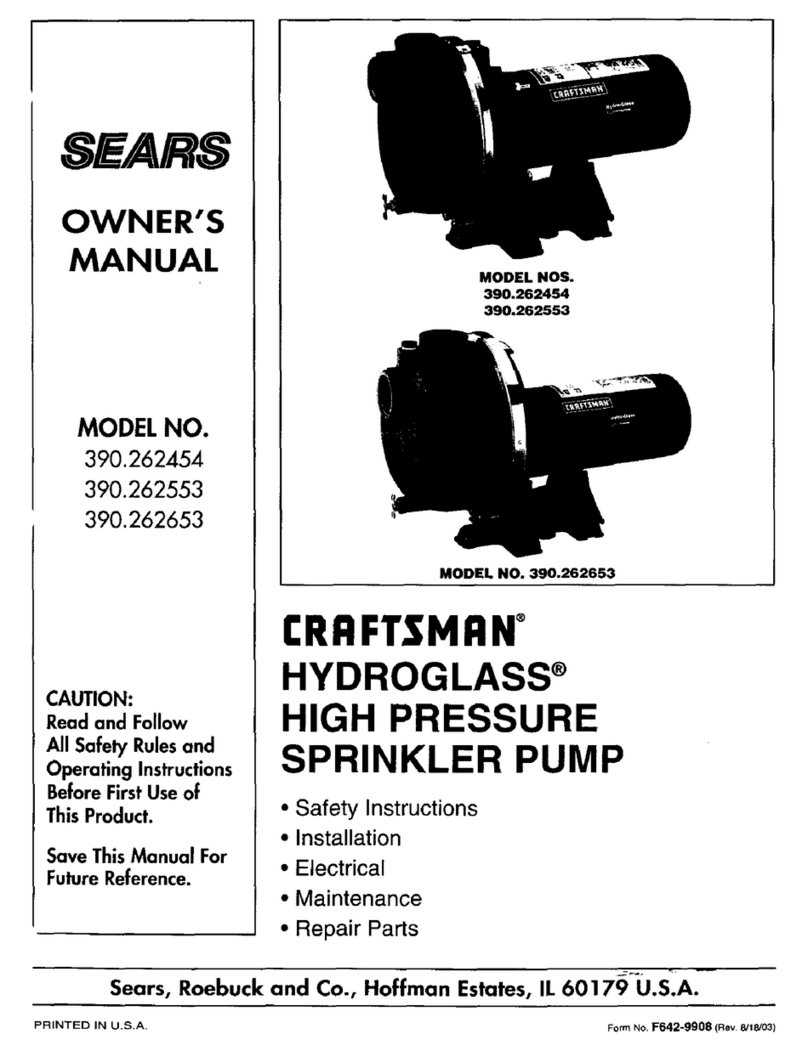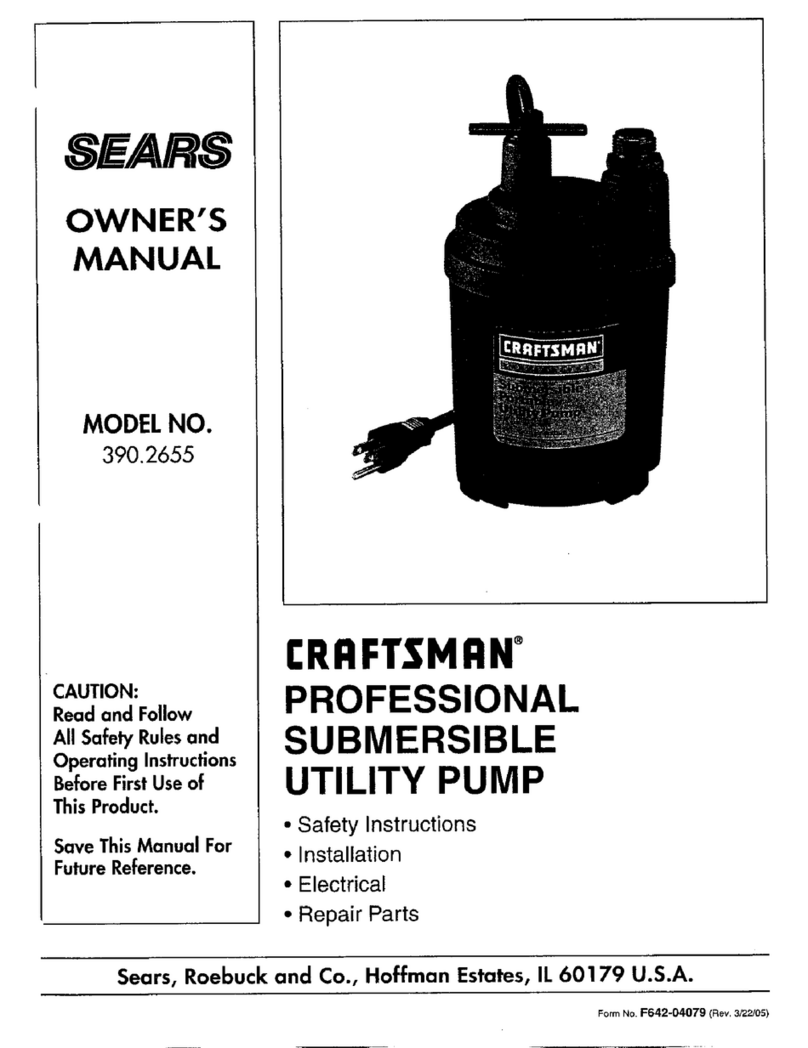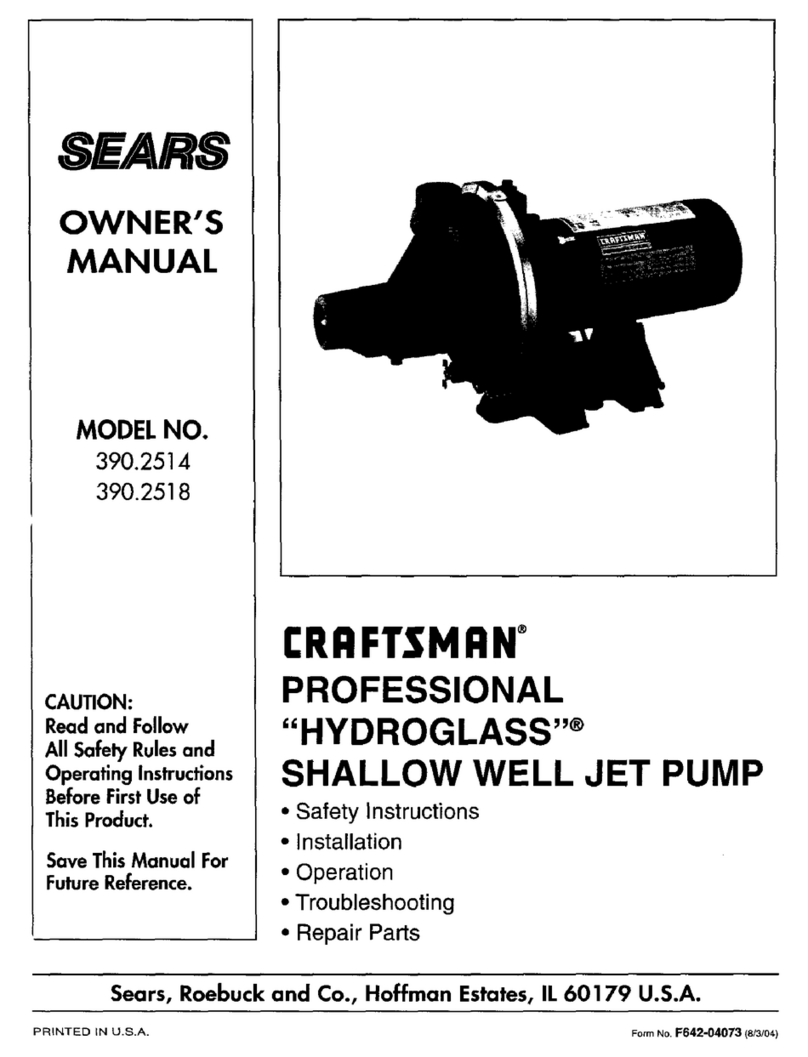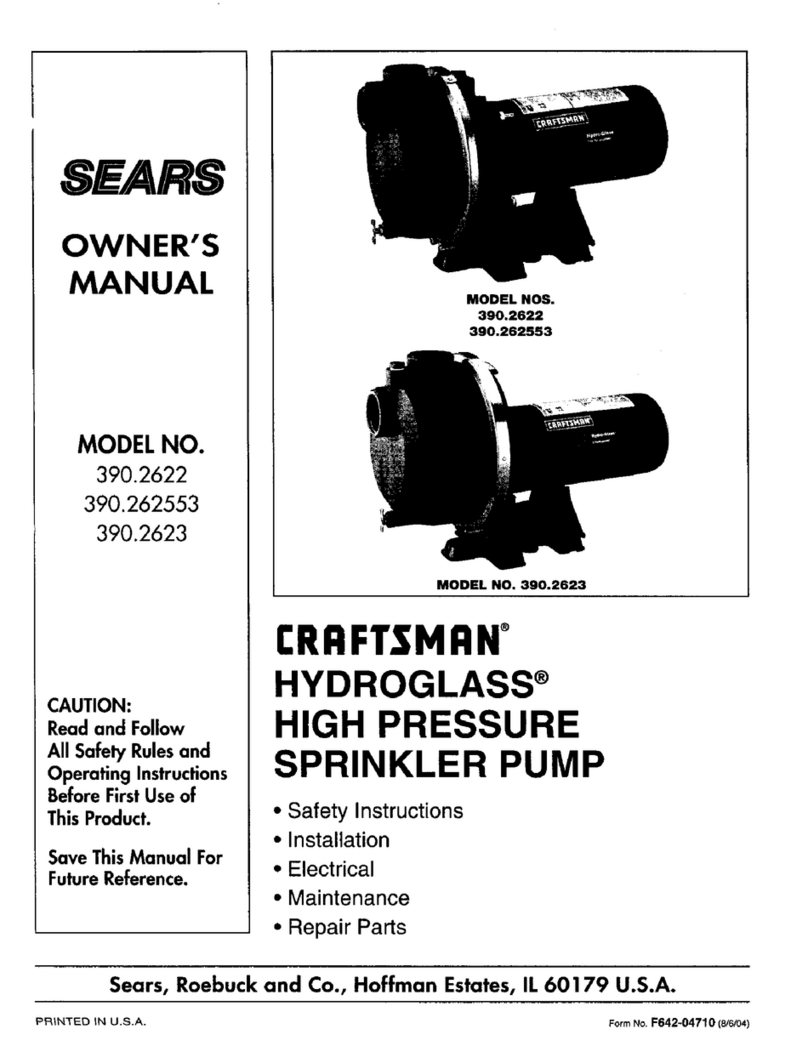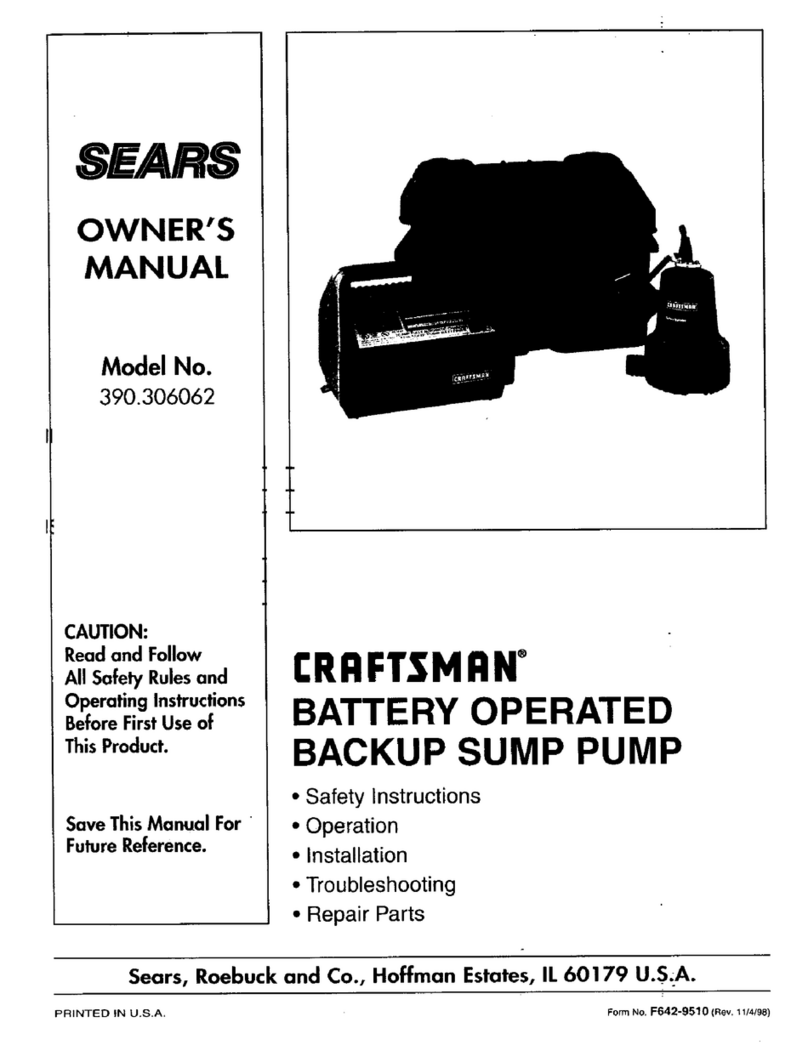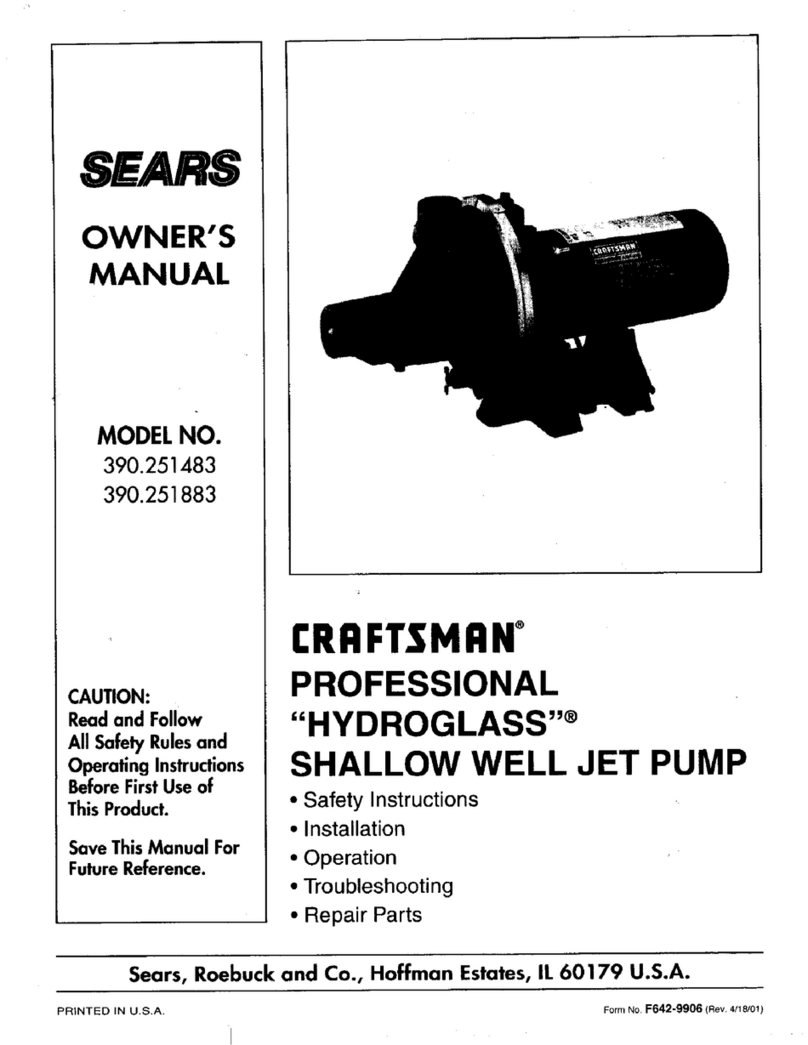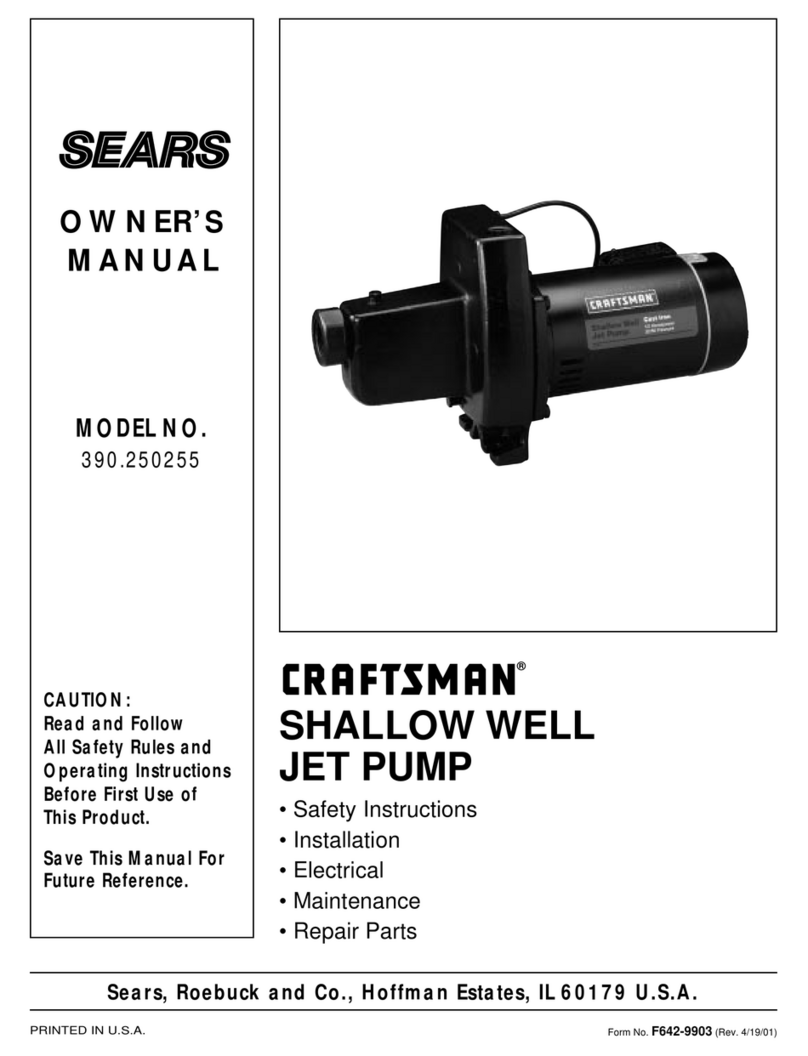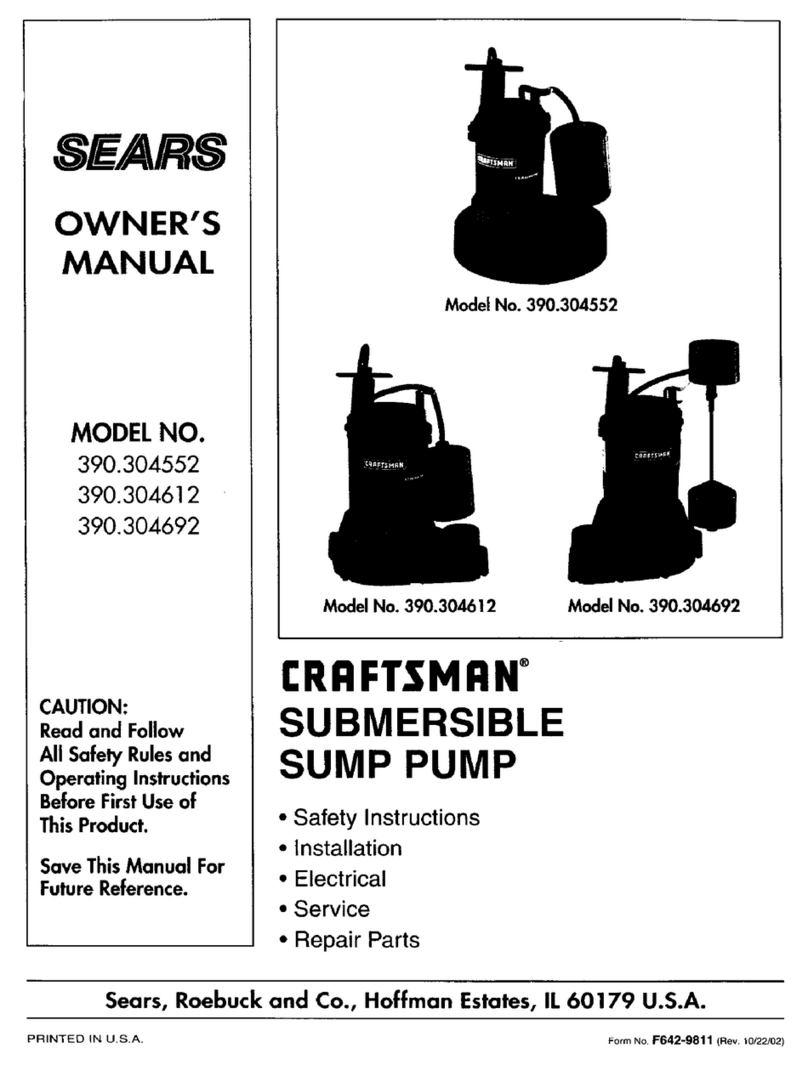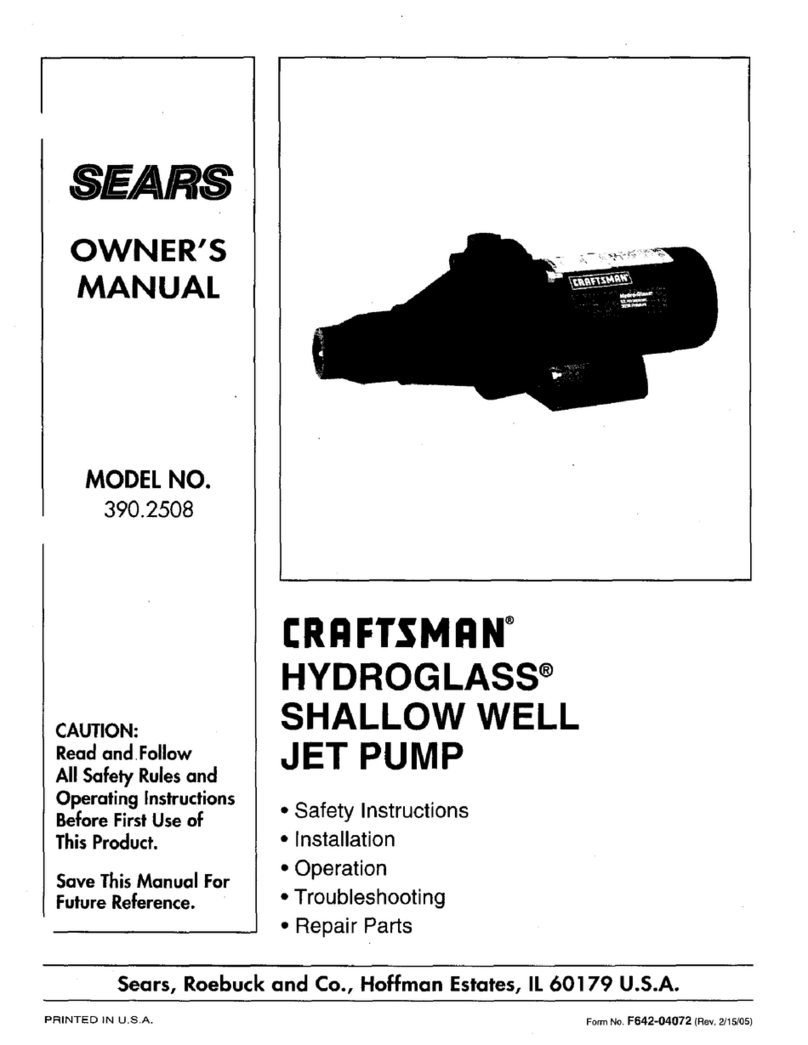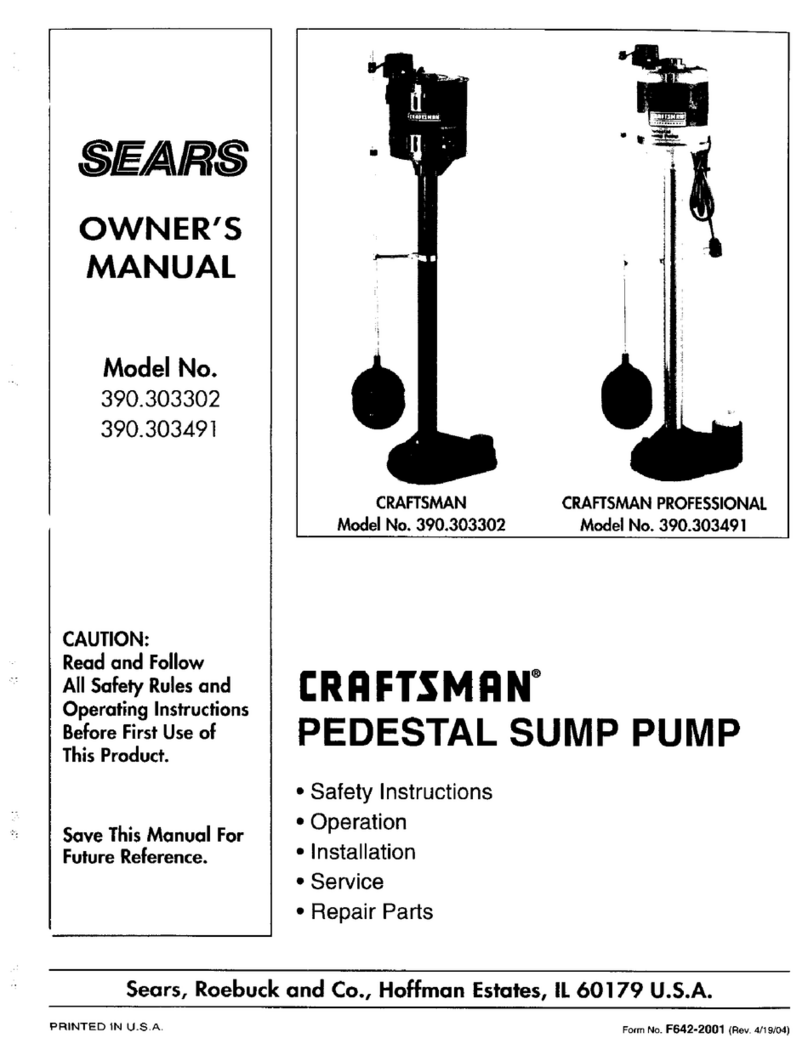
MAJOR COMPONENTS AND WHAT THEY DO
Tank and Air Volume Control
The tank serves two tractions:
1. It provides a reservoir of water. Some of this water
is drawn offwhenever a house fixture is opened (so
that the pump doesn't need to start every time you
open a tap).
2. It maintains a cushion of air under pressure.
A standard tank requires an Air Volume Control
(AVC) to add air to the tank when needed. See the
instructions included with the AVC for details of in-
stallation and operation.
A SEARS Captive Air * tank maintains a constant
precharge of air in the tank and does not require an
AVC. An annual check on the tank pre-charge pressure
is recommended.
Impeller
The pump's impeller rotates with the motor shaft,
causing the water to fly out from its rim by centrifugal
force. The rotation of the impeller, along with the mo-
tion of the water, creates a vacuum at the center of the
impeller (the "eye" of the impeller) which pulls in
more water.
The Vertical Multi-Stage (VMS) pump has two or three
("multiple") impellers; the water feeds through them
one after the other, with each impeller adding to the
pressure. This allows the VMS jet pump to pull water
from greater depths and at a higher pressure than a
conventional single stage jet pumps.
Jet
The jet is a nozzle/venturi arrangement installed in the
well which drives water up to the pump from the well,
boosting the water pressure going into the impellers.
The jet allows water to be lifted from a greater depth
than would be possible with only the impeller eye's
vacuum. In order to drive the jet, part of the discharge
stream from the pump is diverted back "down the
hole" to the jet to help lift water from the well into the
pump suction.
Pressure Regulator
The pressure regulator is adjusted at installation to di-
vert the correct amount of water back to the jet for the
most efficient operation. Under certain conditions, the
pressure regulator may require adjustment during the
pump's life (see Page 10) to restore or maintain the
pump's efficiency.
Pressure Switch
The pressure switch automatically starts the pump
when the pressure in the tank drops to 40 pounds per
square inch (PSI) and stops the pump when the tank
pressure reaches 60 PSI.
Adapter Flange
The VMS pump is equipped with an adapter flange.
This adapter facilitates installation and removal of the
pump without disturbing piping. See Pages 6 and 7 for
more information.
Pressure ReliefValve
Under certain conditions, VMS pumps can generate
very high pressure. The pressure relief valve is installed
to make sure that the pressure in the system does not
exceed the pressure which the system can carry safely.
The pressure relief valve must be able to pass all the
water the pump can produce at the system's rated pres-
sure. Install a relief valve (Sears Stock No. 27229) set
to open at 75 PSI. between the pump and the tank.
There should be no shutoff valves between the pump
and the relief valve. See Figures 11 and 12, Page 8, for
more information.
Pump Mounting
The pump base has four equally spaced 3/4" NPT
threaded sockets. These will take threaded pipe for
legs, to allow enough room to make piping connec-
tions under the pump.
In the case of a single pipe installation (see below), the
pump can be placed directly over the well, using the
offset nipple furnished with the casing adapter to con-
nect the pump to the well head.
Piping
When installed on a 'double pipe' jet, one pipe is the
pressure or drive pipe; this pipe sends water down into
the well to the jet. The other pipe is the suction pipe;
this pipe carries water up to the pump suction from
the jet. Because of the pressure requirements and
depth of multi-stage jet pump installations, use the
chart below for pipe selection.
When installed on a singe pipe jet, the well casing
serves as the drive pipe, carrying water to the jet. The
drop pipe inside the well is the suction pipe, carrying
water up to the pump from the jet.
Use a 'single pipe' system for a 2" or 3" well; use a 'dou-
ble pipe' system for a 4" or larger well. See Pages 6 and
7 for details. Follow instructions packed with jet pack-
age to get proper nozzle and venturi combination for
your pumping depth.
Use 1-1/4" pipe for both suction and drive pipes. A 1"
nipple, a 1-1/4"xl" facing bushing, and a 1-1/4" cou-
pling are included in the jet package. These must be
used with the jet. (See Figure 8, Page 6, for installation
details.)
